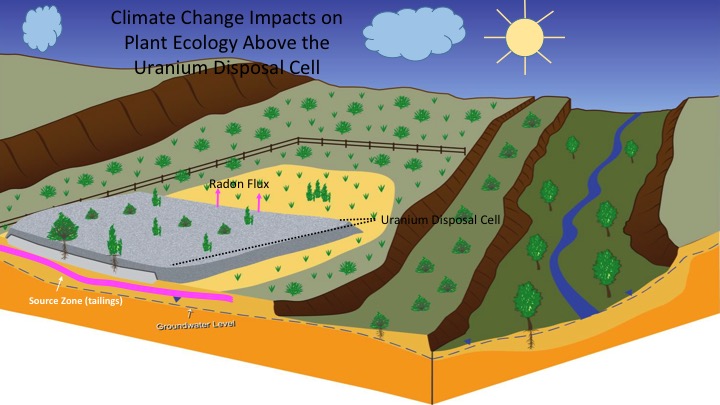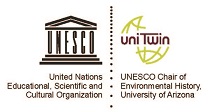Carrie Nuva Joseph (PhD Candidate)
I am currently a graduate student attending the University of Arizona who is assessing the long-term implications of  climate change on the performance of uranium disposal cell covers with respect to tribal communities. I have made it part of my responsibility to understand and contribute to what the long term implications of uranium sites will be to the environment and the communities in which they are located. As a child I remember my first encounter with the Tuba City uranium mill site and always had questions regarding the operation, however never fully understood the complexities surrounding the site until well into my late twenties, when I began my grad school path.
climate change on the performance of uranium disposal cell covers with respect to tribal communities. I have made it part of my responsibility to understand and contribute to what the long term implications of uranium sites will be to the environment and the communities in which they are located. As a child I remember my first encounter with the Tuba City uranium mill site and always had questions regarding the operation, however never fully understood the complexities surrounding the site until well into my late twenties, when I began my grad school path.
I have come to understand that much of the uranium ore that was mined during the World War II and Cold War era came from the Colorado Plateau Four-Corners region (Colorado, Utah, New Mexico, and Arizona), the highest concentrations of uranium in the United States It is estimated that 4 million tons of ore was extracted between 1944-1986. For many years, uranium mill tailings were left uncovered and unregulated because the radioactive waste did not fall under the legal definition of “source material” of the nuclear energy cycle, thus the Atomic Energy Commission (AEC) insisted it did not have jurisdiction It has been documented that there are over 500 abandoned uranium mines (AUMs) in the Four Corners region as a result of lease and mining permit history, located on the Navajo Reservation and very close to our Hopi tutsquah and Pueblo reservations in New Mexico. In addition to the AUM’s there are nine inactive mill sites in the Colorado Plateau region, six are being actively remediated by the Department of Energy (DOE) and the remaining by EPA.
I have been working closely with DOE where I have completed preliminary studies to investigate plant uptake of uranium and other metal contaminants at seven sites across the nation and selected due to the proximity to tribal communities. The results of this study will add to the discussions that are taking place regarding future management of disposal cell covers as newer covers are designed for plant growth to help transpire moisture for sites located in semi-arid environments. Disposal cell covers at sites, like the Tuba City site, are not designed for vegetation however have plants that are growing above cell covers which may or may not hinder the performance standards. Currently there are additional technical studies underway to come to a more concise answer on how to best manage vegetation at sites with older designs.
